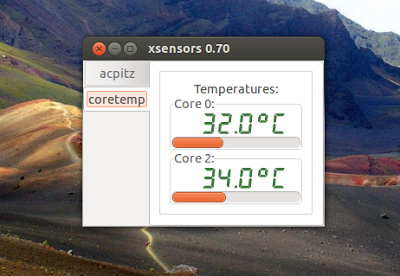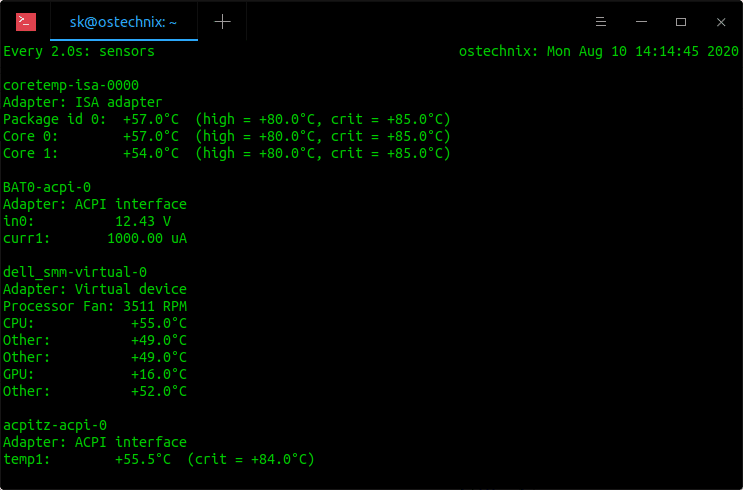
The CPU temperature, along with other details, will be listed in this section.ĭuring typical usage, 70° C and anything lower is considered to be normal temperature.
 Navigate to the Power or similar tab and look for the Hardware Monitor. Restart your PC and press the BIOS Key (Fn keys or Del). With that said, here are the necessary steps if you’d like to try the BIOS method anyway: As such, you can’t use this method to get live readings during specific parts of the task. Whatever CPU-intensive task you’re doing, you’ll have to stop it and restart your PC to access the BIOS. But we recommend using the other methods if possible. On most modern systems, you can also check the CPU temperature via the BIOS. Once it’s installed, run glances from the terminal and press F to view the CPU temp and other details. Execute any of the following commands to install Glances:. Here’s how you can install and use this tool on Ubuntu: Glances is a popular system monitoring tool that uses a web-based interface, i.e., you can remotely monitor your machine’s stats from another device with Glances. Select the CPU core and enable the Display Sensor in the label option. From the top panel, select Sensor Preferences > Application Indicator. Select the CPU temperature and any additional stats you want to monitor. Once Psensor is installed, run it from the application launcher. Execute the following command in the terminal to install Psensor:. Psensor uses the lm-sensors package we installed earlier to display the CPU temperature in graphical form. You can also use the watch sensors command to get real-time CPU temperature data. Execute the following commands in the terminal:.
Navigate to the Power or similar tab and look for the Hardware Monitor. Restart your PC and press the BIOS Key (Fn keys or Del). With that said, here are the necessary steps if you’d like to try the BIOS method anyway: As such, you can’t use this method to get live readings during specific parts of the task. Whatever CPU-intensive task you’re doing, you’ll have to stop it and restart your PC to access the BIOS. But we recommend using the other methods if possible. On most modern systems, you can also check the CPU temperature via the BIOS. Once it’s installed, run glances from the terminal and press F to view the CPU temp and other details. Execute any of the following commands to install Glances:. Here’s how you can install and use this tool on Ubuntu: Glances is a popular system monitoring tool that uses a web-based interface, i.e., you can remotely monitor your machine’s stats from another device with Glances. Select the CPU core and enable the Display Sensor in the label option. From the top panel, select Sensor Preferences > Application Indicator. Select the CPU temperature and any additional stats you want to monitor. Once Psensor is installed, run it from the application launcher. Execute the following command in the terminal to install Psensor:. Psensor uses the lm-sensors package we installed earlier to display the CPU temperature in graphical form. You can also use the watch sensors command to get real-time CPU temperature data. Execute the following commands in the terminal:. 
Here’s how you can install and use this utility on Ubuntu: Lm-sensors is an open-source tool used for monitoring system information such as CPU temperature and fan speed. Also, the readings will be output in millidegrees Celsius.
You can check which temperature reading corresponds to which sensor. Press CTRL + Alt + T to launch the Terminal and execute the following commands:Ĭat /sys/class/thermal/thermal_zone*/tempĬat /sys/class/thermal/thermal_zone*/type. You can monitor the temperature readings from all these sensors with the following steps: The motherboard contains multiple thermal zone devices (sensors), such as the acpitz, which is located near the CPU socket, or x86_pkg_temp, which is embedded in the CPU itself.






 0 kommentar(er)
0 kommentar(er)
